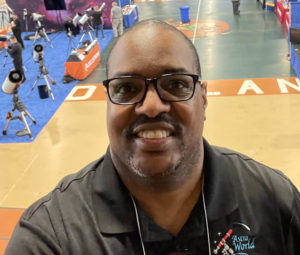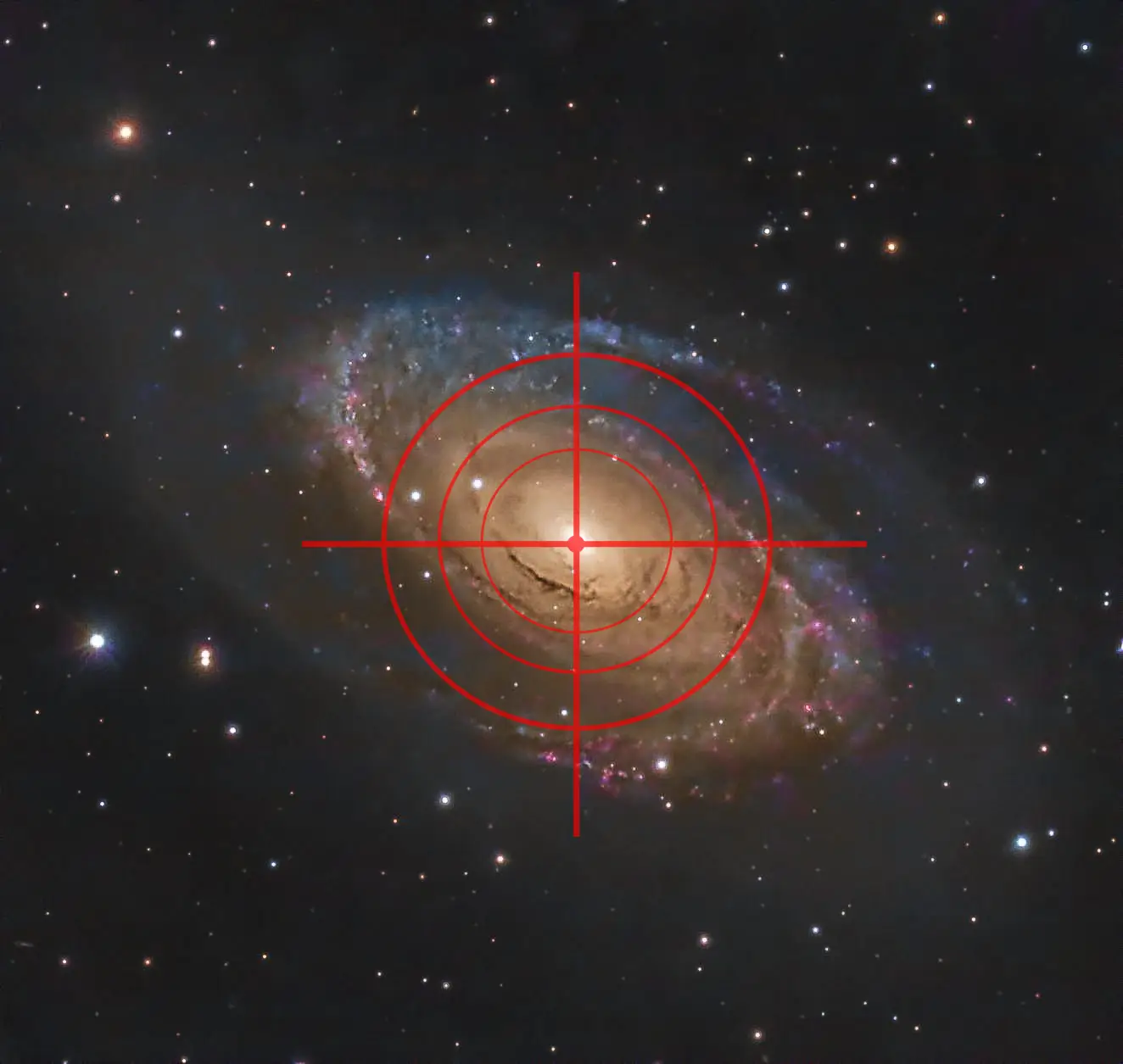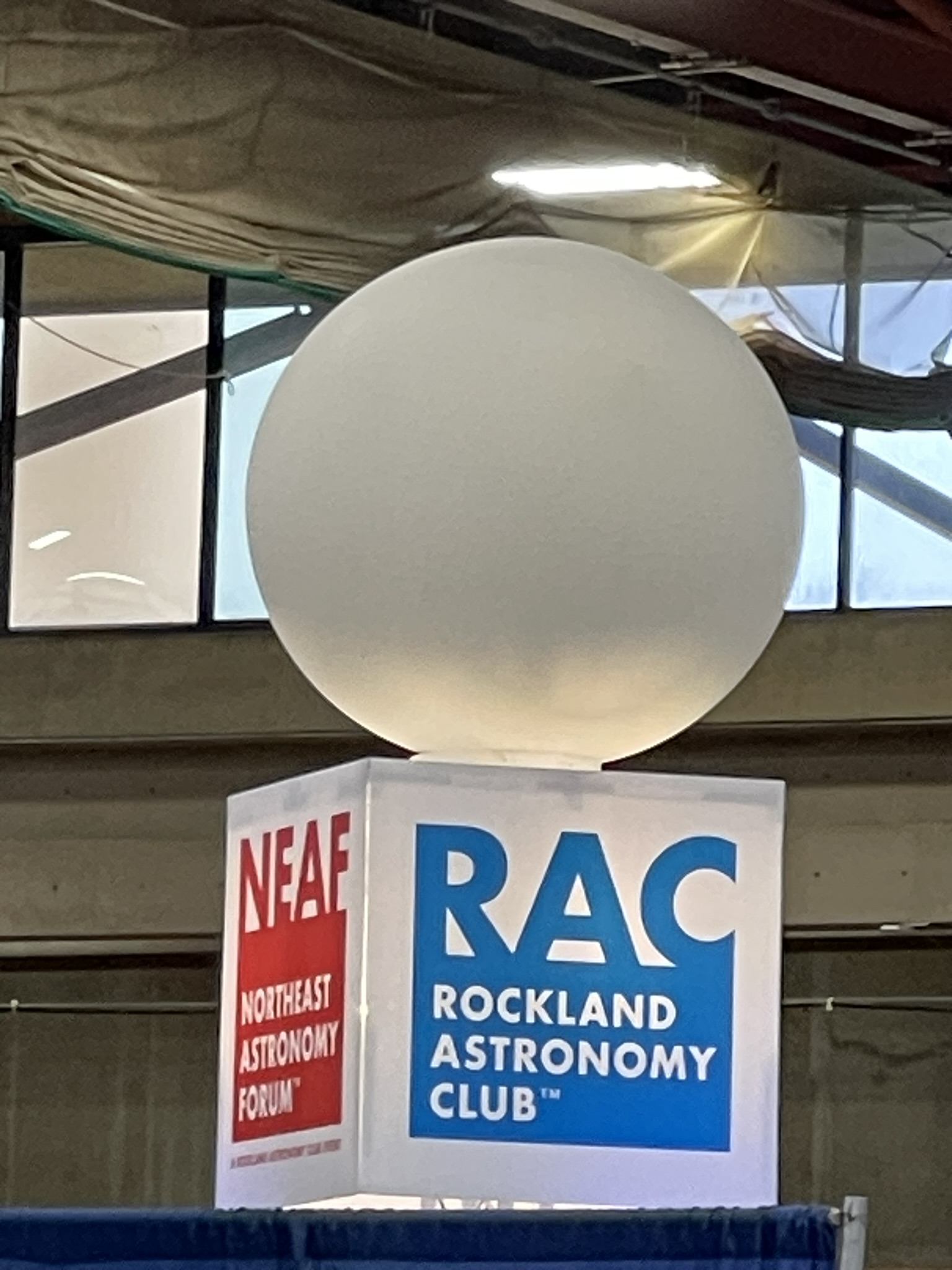A total solar eclipse occurs when the Moon moves between the Earth and the Sun. Typically, these occurrences take place around every 18 months, but most of them happen over oceans or in polar regions. Consequently, when an eclipse passes over land, it’s considered uncommon. When it does happen over extensive land masses, like the event on April 8, 2024, spanning parts of the United States, Canada, and Mexico, it becomes exceptionally rare. Millions of individuals journey to the path of totality, the region where the moon completely obscures the sun, to witness this breathtaking event. So remarkable is this phenomenon that there are individuals known as eclipse chasers who travel worldwide to witness these events firsthand.
I missed out on the 2017 total eclipse that swept over the U.S., and the next opportunity won’t come until August 2044, so you better believe this is going on my bucket list! Witnessing this celestial spectacle firsthand was non-negotiable for me.
When it comes to eclipse events, preparation is key. You’ve got to gather all your gear, get familiar with it, and lock down your viewing location. My game plan? Head to Terre Haute, Indiana, where I was graciously invited by Tom Peter, the 2024 Astroworld Image of the Year winner, and his wife Patty to come to their place and join their friends to soak in the event and snap some stellar photos.
But here’s the kicker: no matter how meticulously you plan, you can’t control the weather. Clouds swooping in to spoil the view? That’s a nightmare scenario. So, I was glued to the Terre Haute weather forecast like my life depended on it. Eclipse Monday was looking dicey, and Tom and I were swapping Discord messages like mad trying to gauge our odds. I’ll admit, I wasn’t feeling too optimistic. But lo and behold, someone up there must have been looking out for us – clear skies prevailed on eclipse day!

Full disclosure, I am not a morning person, let alone someone who wakes up earlier than the roosters before the crack of dawn. I unapologetically place all the blame for my expletives and morning grumbling on my good friend Paul, who’s a bonafide morning person and was eager to hit the road bright and early, 4 AM early. But hey, since he kindly offered to foot the bill for gas and even treated me to breakfast, I couldn’t complain too much. After all, this was no ordinary road trip – it was the chance of a lifetime to witness a total solar eclipse! So, with Paul riding shotgun, we embarked on our epic 4-hour drive to Indiana, ready for whatever celestial wonders awaited us.
Terre Haute lies along the northwest path of totality giving us 2 ½ minutes to photograph the eclipse at its peak, plenty of time when you are using DSLR cameras that shoot images in hundredths of a second.
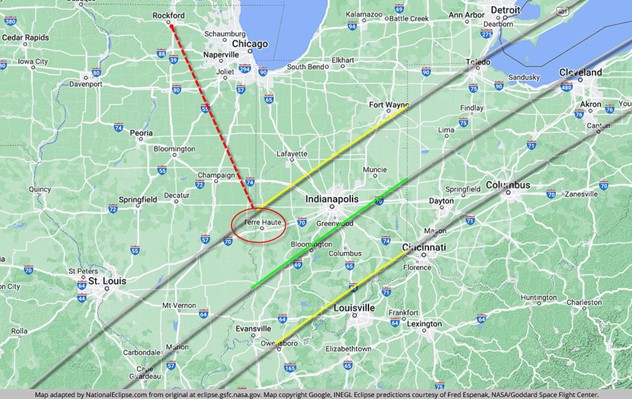
Even though Terre Haute is an estimated 4-hour drive as the crow flies, with so many eclipse viewers on the road, we didn’t make it to Tom’s home until closer to noon EST, so not a lot of time to unload, and start setting up of 2 camera rigs before first contact that was expected to begin in less than an hour.
NOTE: When viewing or photographing the sun, please wear solar rated eyeglasses and use lens filters specifically made for solar photography.
My Equipment
I brought the equipment for photography and to make a high-speed video of the event.
My photography rig consisted of:
- Camera: Canon 6D full-frame DSLR
- Lens: Tokina SZX Super Tele 500mm F8 prime lens (with StarGuy Solar Filter)
- Mount: Celestron AVX Equatorial mount
I used BackyardEOS installed on my Dell laptop to run a scripted plan for each contact period.
For the high-speed video setup, I brought:
- Camera: ZWO ASI120MM-S USB 3.0 planetary camera
- Lens: Rokinon 135m F2 prime lens (with Daystar Solar Filter) connected to a ZWO EAF electronic focuser
- Mount: Celestron WiFi Alt-Az mount
To capture video, I connected the camera to a ZWO ASIAir Pro minicomputer and used SkySafari on my iPad to control the mount.

As first contact or 1C (the moment the moon begins to block the sun) approached, I was frantically still working on my setups. My DSLR setup was looking pretty good, however, the daylight glare made it initially difficult to see my laptop screen. Luckily, Tom had a laptop shade tent he kindly let me use. So, while Paul was cool to get my laptop into the tent, I continued to work on my problem rig, the high-speed video setup.
The video rig was not working as expected and I was unable to get an image showing on the iPad screen from the ASIAir. I ran through my mental checklists of cable connections, and wireless connectivity, all while the clock was ticking towards first contact and my iPhone began warning me through the eclipse timer app that I had 2 minutes to go! So unhappily I decided to abandon the video and focus on the photography, which what my primary focus for the event from the beginning.
As the timer approached first contact, I was ready to go at the DSLR rig and began getting the lens in focus for what was the start of an unforgettable time.

(Celestron EclipseSmart Solar Glasses)

First Contact!!

Since the Tokina is a prime lens, I only needed to pay attention to focus, ISO, and shutter speed. For 1st and 3rd contact, the camera was set to manual mode, 1/400 sec exposures at ISO 200.
Approaching 2C and totality!!

As my eclipse timer began its countdown to totality, I switched the current Backyard EOS plan and checked focus again. When it comes to photographing the sun, let alone an eclipse, focus can be challenging. As I heard over my phone app that it was safe to remove my eclipse glasses and camera solar cover, one of my concerns was capturing a respectable image of “Bailey’s Beads”.
This is an eclipse phenomenon that is seconds before totality when small beads of sunlight are shining between the mountains and other areas of the lunar landscape.
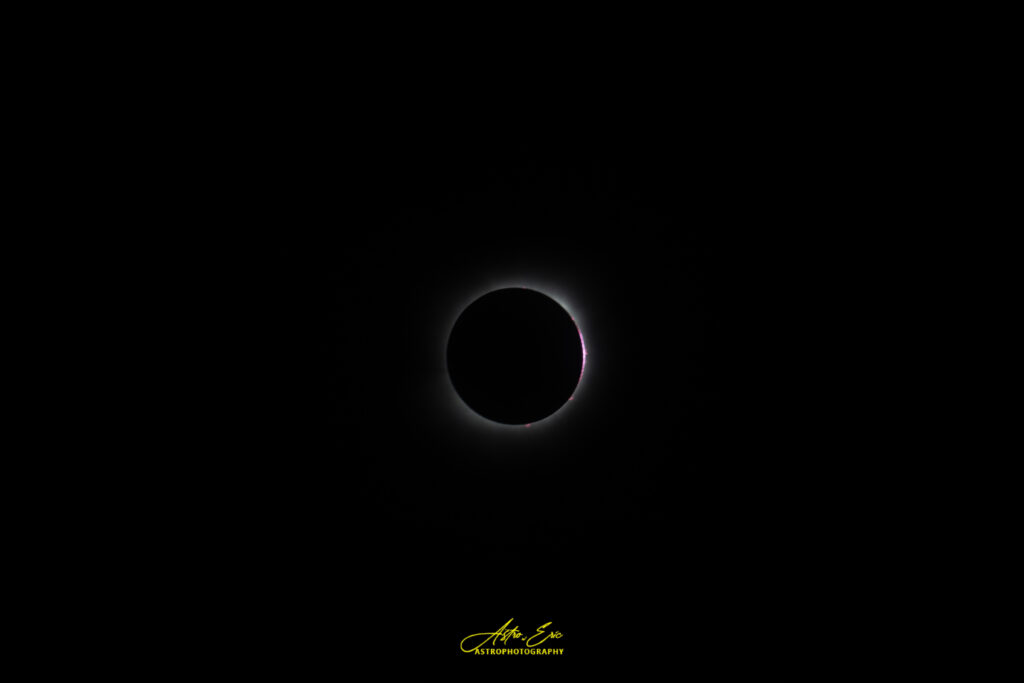
At this point, I was pumped by how I was able to capture this phase of the eclipse on my laptop screen because I was told due to its extremely short time it could be challenging. Then my mind went into shock and awe…Totality!!!

What was it like to see totality?
For me, a person who is fascinated by almost all things astronomy, I’ve seen several photographs of past eclipses, but none can do justice to what I saw with my own eyes. I honestly cannot put it into words. It is beyond surreal and brought me a bit of perspective. How something so amazing is also so natural, inspiring, and humbling. For a brief 2 ½ minutes, I put away all the trivial and routine things of my life and just contemplated my existence in the cosmos. The entire group cheered and I certainly yelled “Oh My God!!” several times. We even heard fireworks being set off in the area! It truly was a sight to behold and a “Where were you during the 2024 eclipse?” moment for sure. To see the beauty of the corona shining behind the moon is something that will stay with me forever.

And just like that, it was over. Coming back down from the highlight of totality, well let’s be honest, was a bit of a bummer. But there was still a bit more to see and do. So solar cap back on the camera lens and eclipse glasses back on, time for 3C and my shot at a diamond!
Snagging a diamond ring photo can happen just before or after totality. It is the moment when a sliver of sunlight breaks past the moon, and you have this bright sphere of light while most of the moon remains over the sun. That bright light is the “diamond” of the ring. Looking back on this phase, I will admit I should have taken a slightly longer exposure as I was only able to grab a very small diamond. Tom’s diamond ring photo from his ZWO Seestar smart telescope is very nicely done and well pronounced.
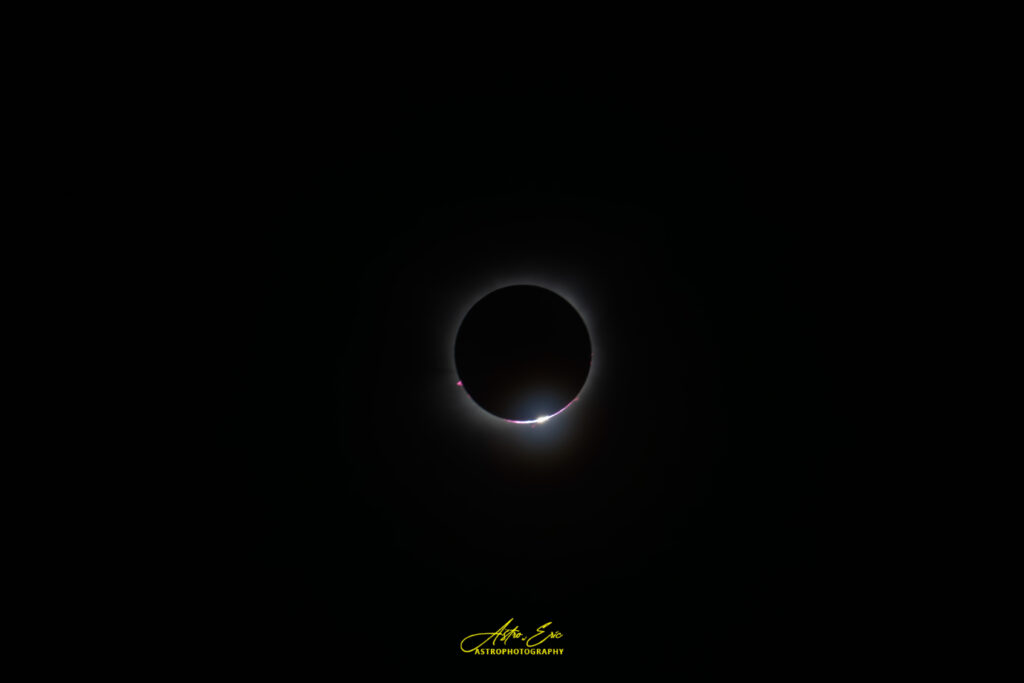
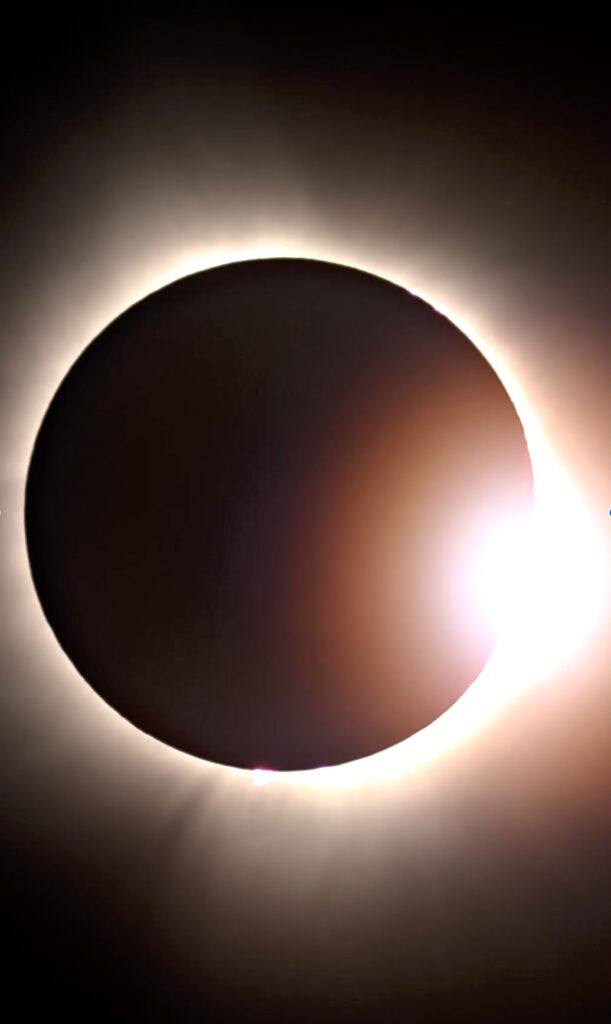
(c/o Tom Peter)
As 3C began in earnest, I looked over to my second rig and thought about what could have gone wrong that prevented me from being able to get a video of the eclipse. So as my DSLR plan was running and taking photos, I headed over to take down my video setup and pack it away.
My Homer Simpson moment
I mentioned earlier that I ran through my mental checklist of connections and what I could have missed as to why the camera wasn’t able to take video. Well, when I took the solar cap off the lens, there was one mistake I made, and it was a Homer, “Doh!!” moment. Care to guess what it was???

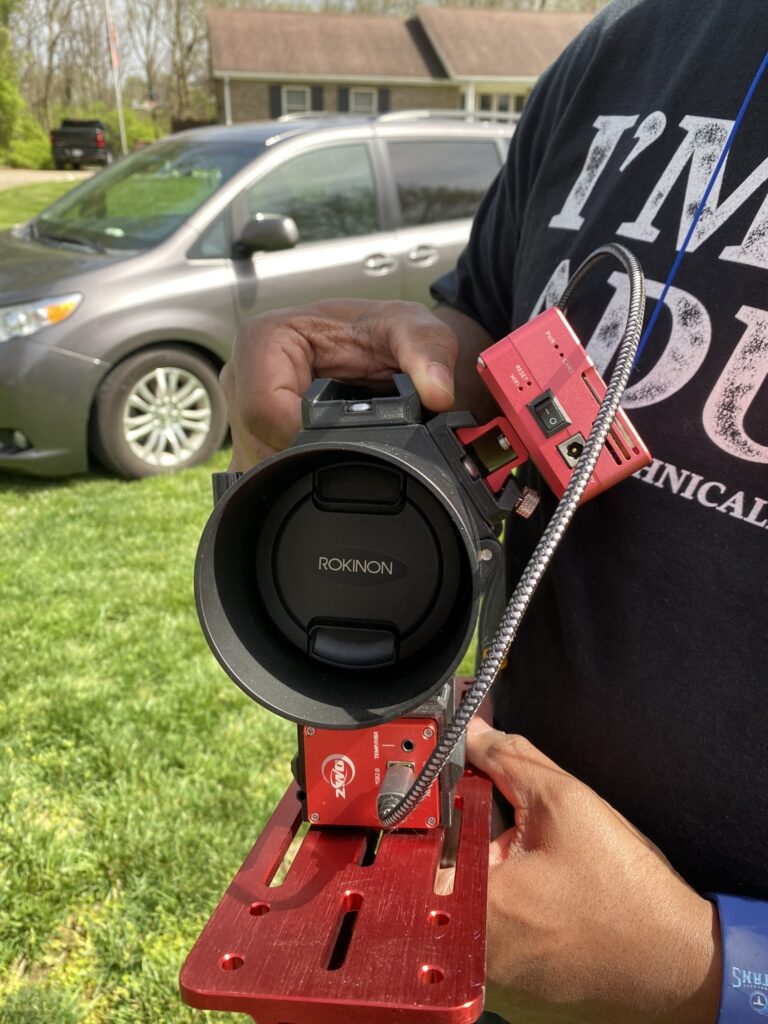
Yep, I had the solar cap over the lens, so I never thought to check to see if I removed the camera lens cover. I’ve made that mistake quite a few times when doing deep-sky astrophotography. My only thought for the miss was that I was in such a rush as C1 was approaching. Concerned about making sure my lens was protected from the sun, I never checked to make sure I took the lens off in the first place and taped the solar cap over it. Again, Doh!
Well after we all joked at my expense, we continued to enjoy the final moments of the eclipse passing into C3 and finally C4 as the moon finally moved from the sun’s path. What an incredible sight we all witnessed.

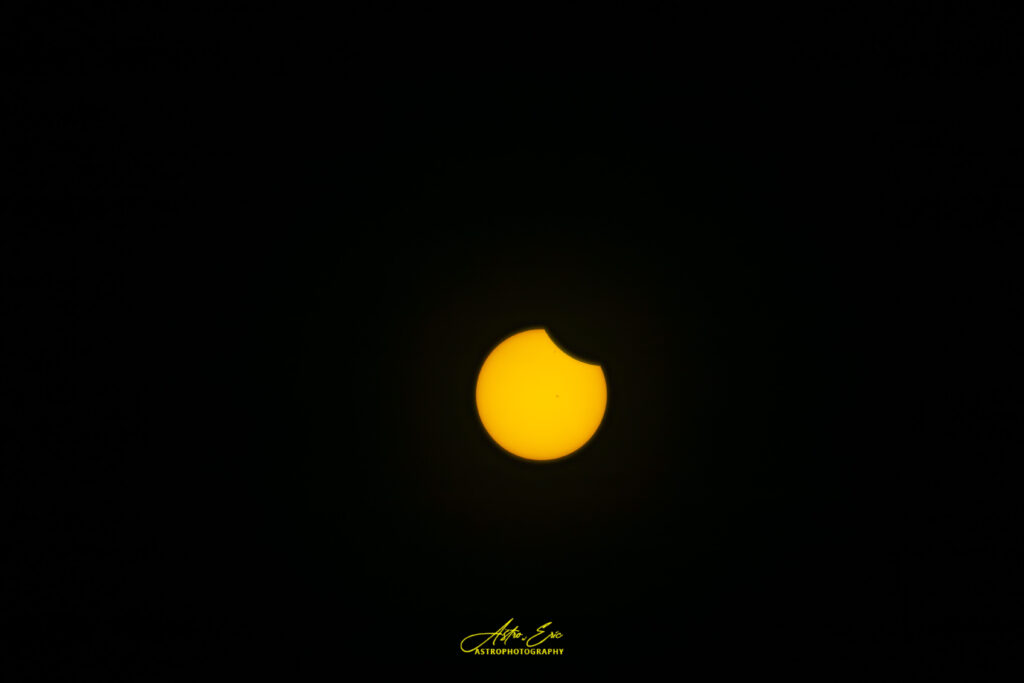
What a day! I would again like to thank Tom and Patty for their invitation and hospitality, it was great to meet them and share this awesome time with them and their friends.
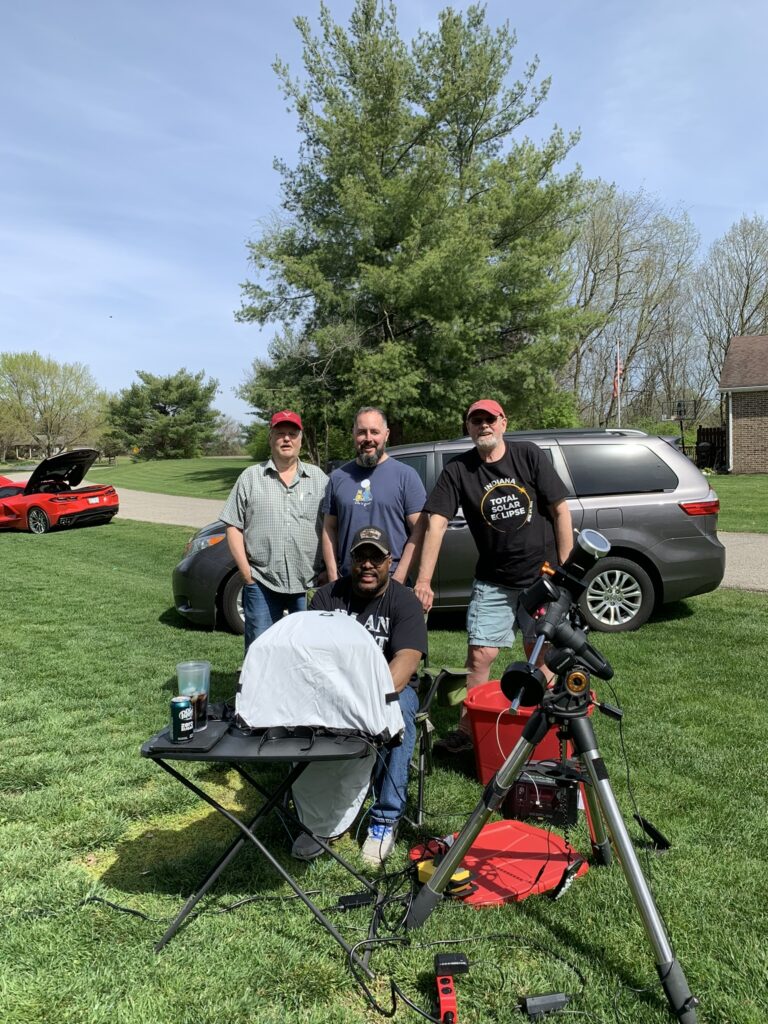
As Paul and I made our way back home, we talked quite a bit about our personal experiences while seeing the eclipse. We agreed on how seeing one near our home is so rare and driving through the amount of traffic heading away from eclipse viewing areas, a lot of people must have felt the same.
If someone asked me if, I’d do this again, there is no question the answer is an absolute “YES”!! This is an event so rare, that I would encourage anyone to see for themselves. If you can travel to see to totality, DO IT! I promise, you will never forget it.
The next total solar eclipse to pass over the United States isn’t until 2044, but there will be several over the next decade. The 2026 eclipse will be seen over Iceland and northern Spain, and in August 2027 one will pass over Luxor, Egypt, and the Valley of the Kings with an expected totality of over 6 minutes. I’ve always wanted to travel to Egypt and see the Great Pyramids, it would be an epic time to see them both. 😊
